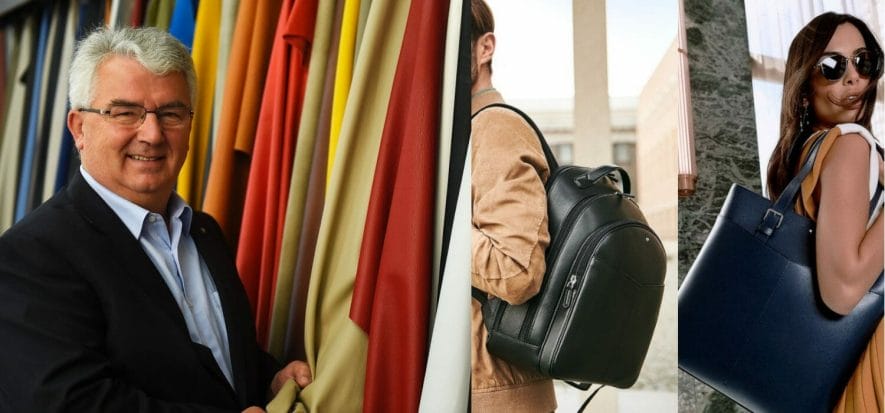On one side is the tanning group that sets up a traceability program able to measure the impact of the leather it tans. On the other is the luxury brand that supports the same approach, so as to compensate for 200 tonnes of CO2. Dani and Montblanc join forces in the Create to Change project. This is the solution, explain promoters, “to compensate for emissions based on the directives from the Kyoto Protocol to face climate change from a leadership position”. The overall focus is the making of a “completely sustainable future”.
Dani and Montblanc
“It’s called Life Cycle Assessment System (LCA) – commented Giancarlo Dani, president and CEO of the tanning group (in photo on the left) -, and it’s our system to evaluate environmental impact, considering the entire leather lifecycle”. The screening goes from origin to destination. It doesn’t stop at the intermediate production and transformation processes that take place inside tanneries. This way it’s possible to know, for example, that only 10% of the CO2 emissions for a square-meter of leather are attributable to tanning. The remaining 90% is to be attributed to other portions of the lifecycle, such as farm, packaging or transport.
Certifications and transparency
“Dani is the first tannery in the world to have certified its LCA system with the Environmental Product Declaration (EPD) in 2011 – continued the manager -. The document recognized us as a pioneer of transparency. That is, along with the fairness of the information tied to environmental impact. Create to Change represents an evolution of this process: we offer our customers and to Montblanc, a complete package that offers the best made-in-Italy leather and a compensation for the emissions emitted to manufacture them”.
Usefulness for the brand
“The Create to Change project allows us to have a real and measurable impact of our effort to offer more sustainable products – adds Nicolas Baretzki, CEO Montblanc (Richemont Group) –. We are proud to launch this important initiative: the offsetting project developed by Dani will help us compensate for 100% of the entire lifecycle of leather that we use. The common objective is to progressively reduce emissions via new organizational models, innovation processes and research and development”.
Compensating for the impact
How does one compensate for the environmental impact? Via the Clean Development Mechanism (CDM). The mechanism by the Kyoto Protocol allows to compensate emissions by buying credits that finance sustainable growth projects, in developing countries. Access to these projects is due to the United Nations Framework Convention on Climate Change, which allows the purchase of CERs (Certified Emission Reduction) credits. 1 credit is equal to 1 tonne of CO2 non-emitted or absorbed. The purchase of these credits also allows to contribute to sustainable development. Montblanc decided to finance a project in Guatemala, the San Antonio El Sitio Wind Power Project.
Photos of Montblanc products from Instagram
Read also:










